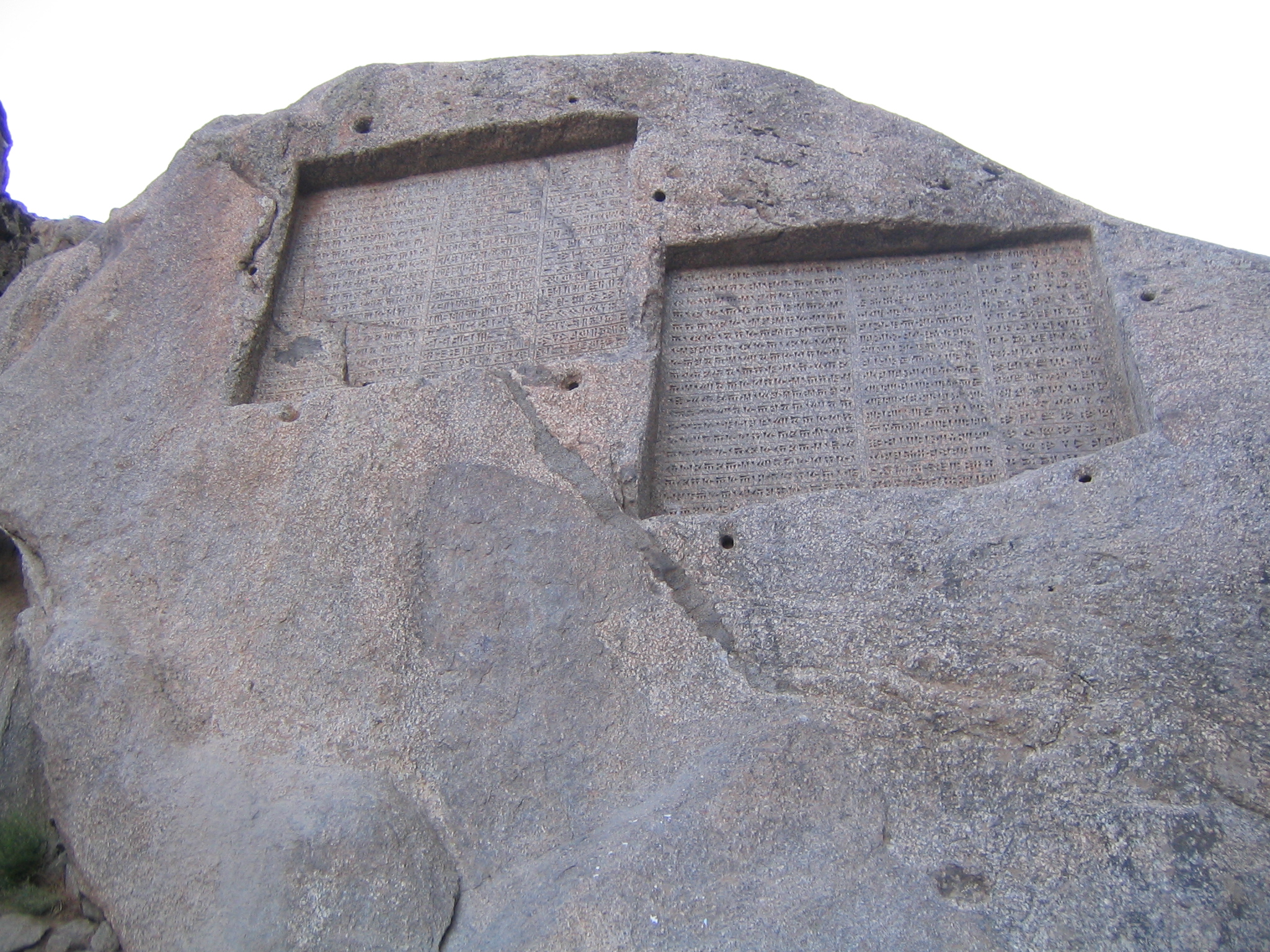Photo : Ganjnameh
Province:
HamadanAdditional Information:
Description:
Ganjnameh is an ancient inscription, 5 km southwest of Hamedan, on the side of Alvand Mountain in Iran. The inscription, which has been carved in granite, is composed of two sections. One (on the left) ordered by Darius the Great (521-485 BC) and the other (on the right) ordered by Xerxes the Great (485-65 BC). Both sections, which have been carved in three ancient languages of Old Persian, Neo-Babylonian and Neo-Elamite, start with praise of God (Ahura Mazda) and describe the lineage and deeds of the mentioned kings. The later generations who could not read the Cuneiform alphabets of the ancient Persian assumed that they contained the guide to an uncovered treasury; hence they called it Ganjnameh. The name literally means "treasure epistle", but it has also been called Jangnameh (Persian: جنگنامه) whose literal translation is "war epistle". The translation of the text on the right plate, attributed to Xerxes, is: "The Great God [is] Ahuramazda, greatest of all the gods, who created the earth and the sky and the people; who made Xerxes king, and outstanding king as outstanding ruler among innumerable rulers; I [am] the great king Xerxes, king of kings, king of lands with numerous inhabitants, king of this vast kingdom with far-away territories, son of the Achaemenid monarch Darius." Today two new carved tablets have been placed in the site's parking lot with Persian explanation and its English translation.
Download this photo